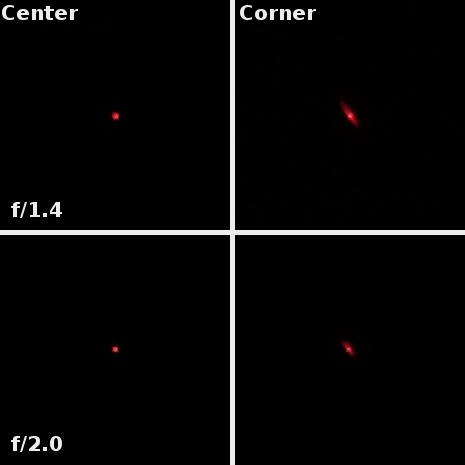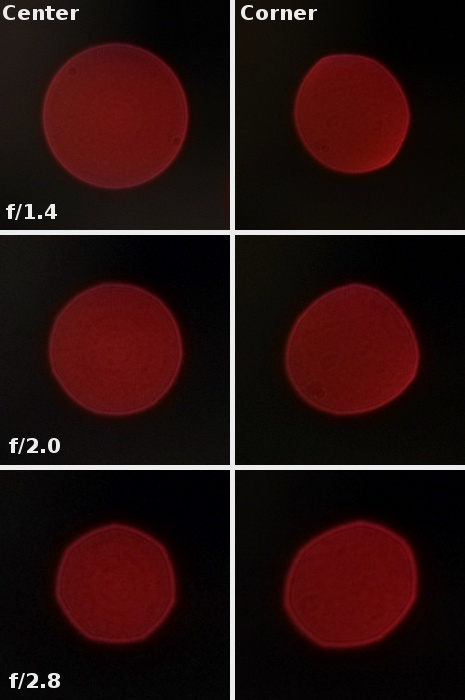Fujifilm Fujinon XF 23 mm f/1.4 R
7. Coma, astigmatism and bokeh

The averaged astigmatism result of three biggest relative apertures reaches a moderate value of 10%. In reality the performance at the maximum relative aperture dominated it as, in that place the image was strongly influenced by the astigmatism approaching 20%.
Please Support UsIf you enjoy our reviews and articles, and you want us to continue our work please, support our website by donating through PayPal. The funds are going to be used for paying our editorial team, renting servers, and equipping our testing studio; only that way we will be able to continue providing you interesting content for free. |
- - - - - - - - - - - - - - - - - - - - - - - - - - - - - - - - - - - - - - - - - - - - - - - -
The defocused images can be described only in superlatives for a change. The Fujinon can provide blurry images which are very pleasing to the eye and defocused light points turn into nice circles with even light spread.







